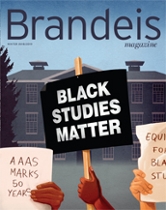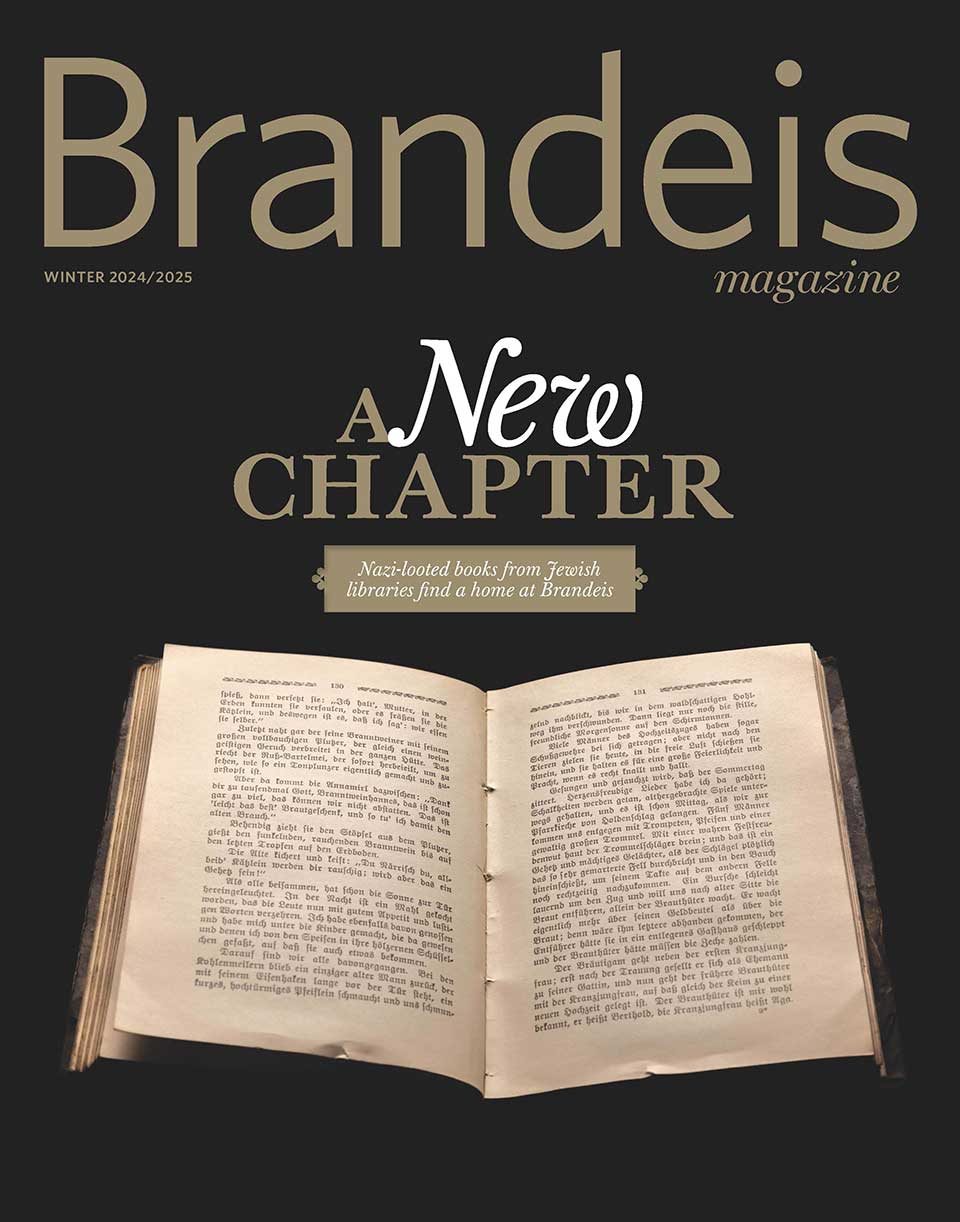Letters

The ‘fierce urgency of now’
The cover story in the Winter 2018/2019 issue, “Hard Truth-Telling,” is an important acknowledgment of the brave action a handful of African American and Latino students took at Brandeis a half-century ago. As a white first-year student in 1969, I found it difficult to know how to support the Ford Hall occupiers. It was clear students of color needed to lead this action. It was equally clear it shouldn’t be their fight alone.
A mere one month earlier, hundreds of students, most of them white, occupied Mailman Hall for 16 days, offering sanctuary to Pvt. John D. Rollins, who sought refuge at Brandeis after going AWOL from the U.S. Army. That action ended when 150 of us traveled to Fort Devens with Pvt. Rollins, who continued his protest by turning himself in to the military authorities there. I believe we avoided arrest on the Army base in large part because of the optics of arresting so many white middle- and upper-class students protesting the Vietnam War.
Although the compulsory draft disproportionately affected poor young men of color, the Mailman Hall sanctuary was seen as a white-student action and the Ford Hall occupation an action by students of color. I vividly recall my friends bearing witness to this reality, but even these deep discussions did not include students of color. Passion for social and economic justice in the ’60s crossed color lines, but the human connection didn’t. This was not so much the product of a lack of willingness as a reflection of the bigger social and political conditions we all experienced.
In our society, we still struggle to understand how activists of color and white allies can find a way to work together to create social change. As the president of a small liberal arts university, I believe the conversations on our campus echo what I experienced so many years ago and point to a need for honest dialogue. Dr. Martin Luther King Jr.’s call to recognize the “fierce urgency of now” is no less critical today as it was when he spoke those words in 1963.
Chuck Lief ’72
President, Naropa University
Boulder, Colorado
I read with great interest the cover story in the Winter issue of Brandeis Magazine, “Hard Truth-Telling,” about the 1969 Ford Hall takeover. I was a freshman then, and participated in anti-war and related activities, but, like so many of us on campus, I was incidental to the takeover and totally surprised by it. Although I’d had no contact with black students in my classes, my dorm or my developing social circles, I had heard about the Transitional Year Program and appreciated its goals.
Curiously, when your magazine arrived, I was reading Pauli Murray’s memoir, “Song in a Weary Throat,” in which she devotes a chapter to her five years at Brandeis. Her description of the Ford Hall occupation was an eye-opener for me; I hadn’t heard of the events that led up to it. I highly recommend reading this chapter (along with the entire memoir). Murray mentioned there was a psychology instructor at Brandeis, Frances J. Perkins, who taught at Lemberg, who was also African American. They felt totally isolated. “We had no real standing with either of the contending parties to the dispute, since no one considered that we might have something to contribute,” Murray wrote, underscoring the plight of being both black and female in 1969. A disturbing postscript to the occupation was that, when Murray was finally able to enter her office in Ford Hall, she discovered it had been trashed, and books, supplies and personal items stolen.
I’d like to offer a correction to “Hard Truth-Telling.” Chad Williams writes that Wellington Nyangoni, the first chair of the African and African American studies department, became Brandeis’ first tenured black professor in 1979. In actuality, that honor belongs to Pauli Murray, who achieved tenure in 1971, eight years before Nyangoni did.
I’m glad to know there’s been some improvement in inclusion and equality over the years. We still need so much more, on and off campuses across this nation. I’ve been heartened by what I read from President Ron Liebowitz. May progress continue on all fronts, nonviolently.
Sara Sunstein ’72
Richmond, California
Kudos to Professor Chad Williams for his history of the Department of African and African American Studies. Although longtime professor of American studies Lawrence Fuchs is mentioned in passing in the article, some might not know that Professor Fuchs was the person who hired the university’s first African American professor, the beloved Pauli Murray. For several years, Fuchs taught one of the first courses at a U.S. university on African Americans. He also worked around the clock as a key negotiator during the occupation to encourage Brandeis to meet the demands of the Ford Hall students and their supporters.
Neil Kauffman ’69
Swarthmore, Pennsylvania
MKTYP’s roots
Two articles in the Winter issue (“Hard Truth-Telling” and “No Stopping Short of Success”) describe the founding of the Transitional Year Program, now renamed the Myra Kraft Transitional Year Program. Yet neither story makes any mention of the significant role played by Christoph Hohenemser, then a faculty member in the physics department.
As tutors for the first TYP class, we would like to correct this omission. We were several of the physics students who spent much of the day after Dr. Martin Luther King Jr. was murdered talking with Chris, trying to come up with ideas for bringing more black students to Brandeis and for ensuring they would be able to prosper at the university. The proposal that emerged from that discussion was presented to the faculty and eventually helped form the TYP program.
Of course, there were many ideas going around at the time, and no one person or group can be called the sole originator of the program. Nonetheless, Chris and his students played an important role. Any history of the now 50-year-old TYP program ought to include their part in it.
Chris, who died in 2011, was very proud of his role in TYP’s founding. In a short bio he wrote for Swarthmore, his undergraduate alma mater, about a decade ago, he said, “In my judgment, my greatest achievement was the establishment of a Transitional Year Program at Brandeis.”
Janet Jackel, Larry Jackel, B. Mitchell Baker, Robert Rosner, Joel Schwartz
Members of the Class of ’69
A love that has never melted
Imagine my amazement and delight when I realized (after close inspection) that the young woman in the photo in the Winter issue was me. As I recall, the snow was quite skiable that day in 1956.
I graduated that June, and my life and Brandeis’ life have been connected ever since. I’ve served on the President’s Council, as a University Fellow and as a member of the Board of Trustees for many years.
That lovely skiing experience snowballed into a love for the university that has never melted. Thanks for making me the “centerfold” I otherwise could never have been.
Marjorie Grodner Housen ’56
Palm Beach Gardens, Florida
